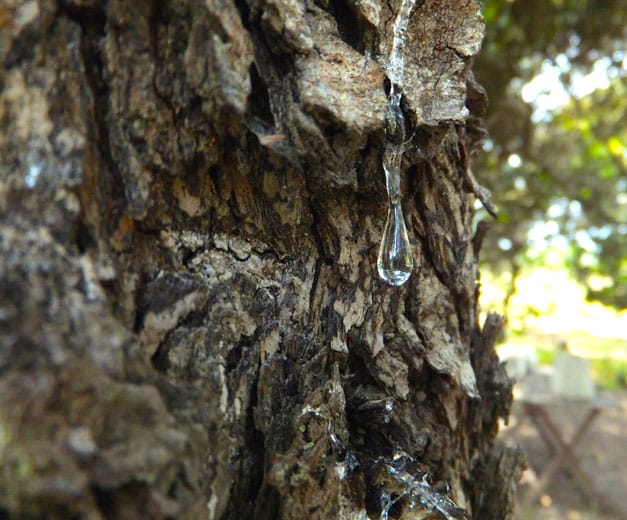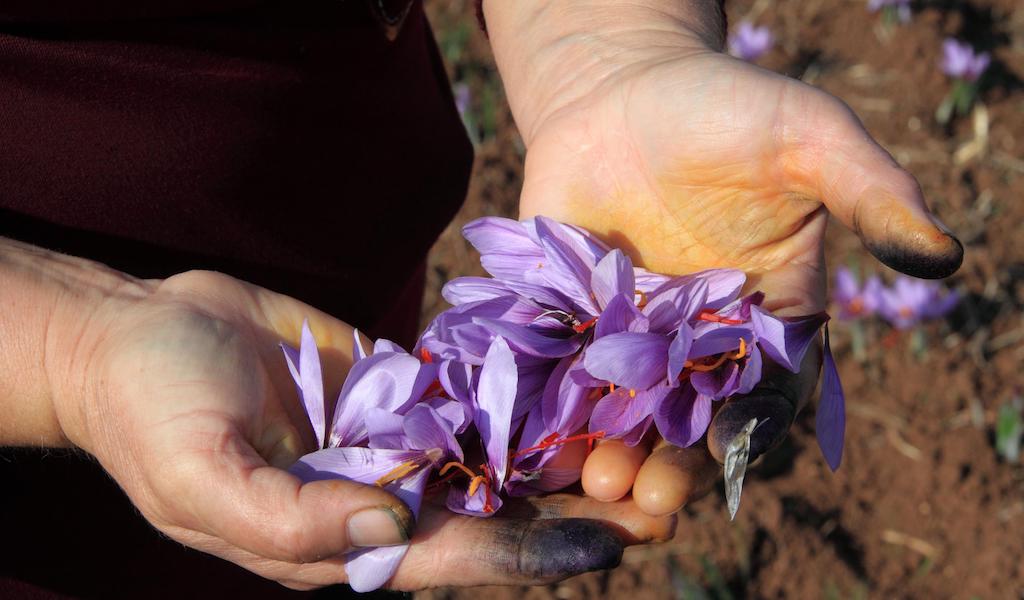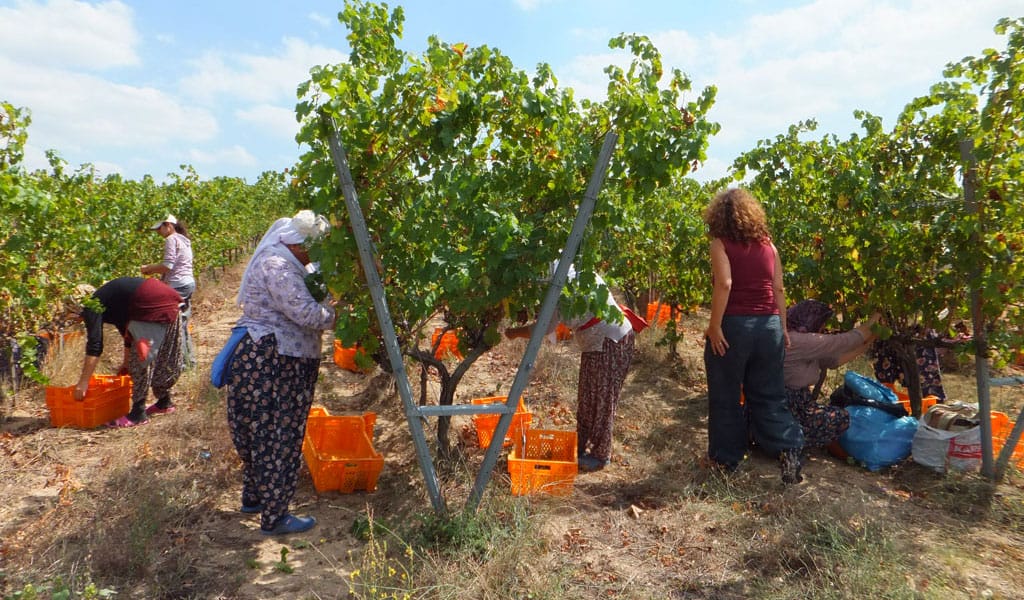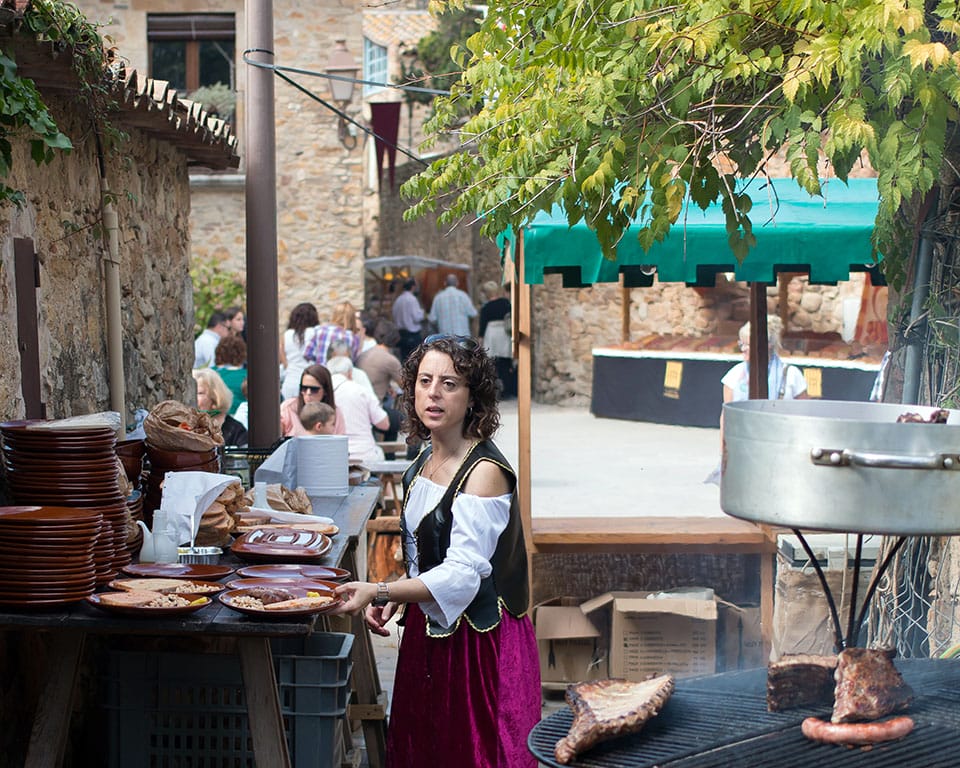Gnarled evergreen mastiha (mastic) trees cling to terraced hillsides throughout the southern part of Chios, a Greek island in the Aegean. These humble trees (Pistacia lentiscus var. chia) have been fought over and cherished for thousands of years because they produce “tears” of delicious and healing sap. The best pharmacists in ancient times used to concoct luxurious healing balms with mastiha sap; Emperor Justinian’s personal physician mixed mastiha and deer brains to make a beauty cream. We haven’t tried that recipe yet.
Chios is actually geographically closer to Turkey than Greece; it’s just an hour and a half by ferry from Çeşme (reachable from Istanbul by plane or bus via Izmir) and an eight-hour overnight ferry or one-hour flight from Athens. And consequently, mastiha has been and continues to be widely used throughout the region. It was the original chewing gum and was favored by the intelligentsia in 5th-century Constantinople (Istanbul today). It’s still used as a traditional flavoring for sweets in the Middle East and for liqueur in Greece. Turks call the island Sakız Adası (mastic gum island) and use mastiha to give Turkish dondurma (ice cream) its characteristic chew. Increasingly, mastiha is used in medical applications because it has anti-inflammatory and antiseptic properties.
 We visited Mestá, a well preserved medieval village in Chios, to meet with Vassilis Ballas and learn how to harvest mastiha. Ballas runs the eco-tourism company Masticulture and also farms mastiha and olive trees. In 2006, he and his wife moved from office life in Athens to Mestá, where Ballas’s grandparents and great-grandparents grew up. His roots run deep here. Walking around the village with Ballas was a treat; he stopped to greet everyone and introduced us to the best souma (fig grappa) maker in town for a noon tasting.
We visited Mestá, a well preserved medieval village in Chios, to meet with Vassilis Ballas and learn how to harvest mastiha. Ballas runs the eco-tourism company Masticulture and also farms mastiha and olive trees. In 2006, he and his wife moved from office life in Athens to Mestá, where Ballas’s grandparents and great-grandparents grew up. His roots run deep here. Walking around the village with Ballas was a treat; he stopped to greet everyone and introduced us to the best souma (fig grappa) maker in town for a noon tasting.
In the 14th century, the Genoese gained control of the mastiha trade from the Byzantines, Ballas explained. The Genoese built compact stone villages to protect mastiha and its farmers from pirates and to tightly control trade. Pirates were a serious threat because mastiha was worth its weight in silver. Every farmer had to give his entire mastiha crop to the Genoese, and this system continued with slightly better conditions under Ottoman rulers, until the island became a part of Greece in 1912. The mastiha trade was a free-for-all from 1912 to 1936, until growers formed a cooperative that is still functioning today. In 1997, the Chios Mastiha Growers Association qualified for a Protected Designation of Origin seal that they proudly use to distinguish their products from imitation mastiha.
Ballas took us to a 70-year-old mastiha grove to learn how farmers harvest the resin. The trees have small, oval leaves and thin, twisting branches that emerge near the base of the trunk. In July, when there is no threat of rain, farmers clean around the base of the trees and sprinkle a layer of calcium carbonate. This clean landing pad helps to coat the extremely sticky resin when it falls. Next, farmers make small, shallow horizontal incisions into the bark. As the tree tries to heal these wounds, it excretes the anti-inflammatory resin, which drips onto the ground below. Ballas demonstrates on a tree, and sure enough, the sap starts running. “Just taste a little bit because it is very sticky!” Ballas warns as we dip our fingers into the clear sap. The sap is intensely piney, slightly bitter, powerfully sticky and oddly refreshing. Farmers start making incisions close to the base of the trunk, then gradually work up the tree so they aren’t stepping on resin. During the day the resin drops, and after a week it dries enough to be harvested. Sometimes pieces can be as large as bricks!
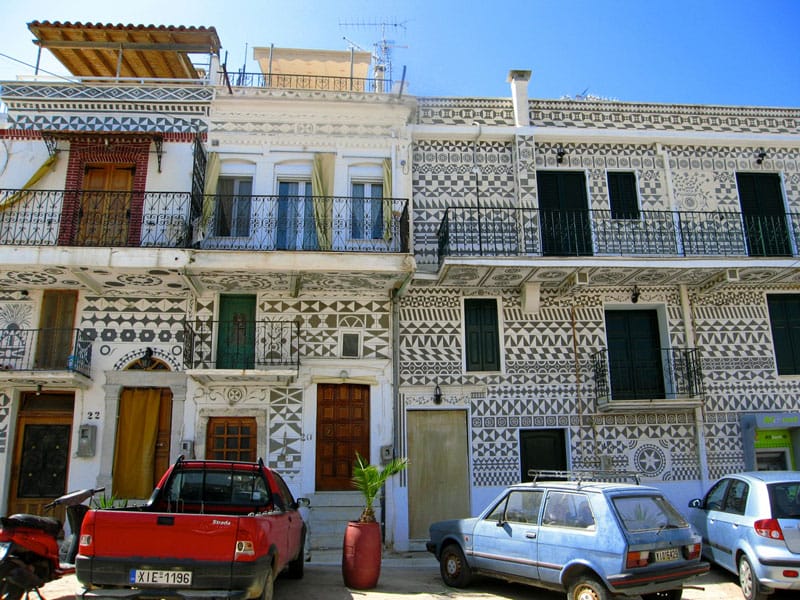
In September, before the rains come, farmers scrape the residual mastiha from the bark, then sweep what is under the tree into a sieve. Now begins the intense cleaning process. First, farmers soak the collection of leaves, dirt and resin in barrels of water, then add soap to make the resin float while the soggy debris sinks. Workers clean each piece of mastiha with a razor-sharp tool to remove dirt stuck in the resin. This part of the process is crucial because farmers receive between $75 and $100 per kilo, depending on the percentage of impurities in the mastiha. Although this process is similar to how it has been harvested for centuries, farmers now have weed whackers and trucks, which reduces the time they spend in the groves. Ballas calculates that if you have a thousand trees you can make $7,500 to $10,500 annually, with trees producing up to 200 grams per season.
Finally, farmers deliver their cleaned harvest to the cooperative’s processing plant near the city of Chios. We met with Ilias Smyrnioudis for a tour of the factory and to learn how they make modern-day mastiha chewing gum. Smyrnioudis has a Ph.D. in molecular biology and started managing the factory 10 years ago. He enjoys his job and the fact that he can go swimming in the sea every day.
The factory looks like a nondescript warehouse from the outside, but inside, the air smells like fresh pine, and everyone is dressed in varying shades of blue, which lends the place a Willy Wonka vibe. First, we visit the delivery room, where a camera assesses the percentage of impurities as farmers drop off their mastiha crop. Each batch is labeled with a number and the farmer’s name, and a sample is kept for traceability. Smyrnioudis has to keep these records because mastiha is used in medical applications and the factory is frequently visited by international regulatory agencies.
Next, the mastiha is separated by size for different cleaning processes. Pea-sized pieces are cleaned with a machine, while bigger almond-sized pieces are cleaned by hand. A dozen women work eight hours a day, picking out tiny pieces of dirt from the resin. Novices can clean one to two kilos per day, while veterans can clean up to six kilos. They work quickly over piles of powder-coated pieces of mastiha, every once in a while pouring cleaned pieces back into bins to be examined again. Each piece is looked over three separate times. This is partly why mastiha retails for around $130 per kilo.
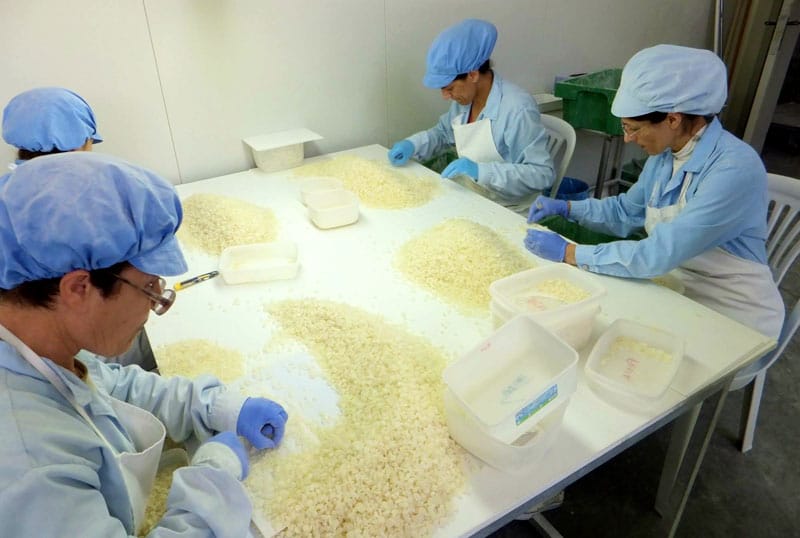
After the mastiha is perfectly clean, it is packed into bags for shipment all over the world. Every year, 50 tons of mastiha are sold in the Middle East, with France and the U.S. trailing far behind, at 15 and 10 tons, respectively. Smyrnioudis says the cooperative is working to market mastiha as a pharmaceutical product because people are willing to pay more for medicine than for food ingredients. For example, a U.S. company imports mastiha to make two medical skin-protecting products: one is a sticky liquid that goes between a cast and your skin, while the other is for 7 million insulin pump customers. Over the past 10 years, the cooperative has invested in medical studies to find out why mastiha helps with digestion issues, and now they produce mastiha powder capsules. Capsules are not as exciting to taste as chewing gum, though, so we moved to the candy-making floor.
To make mastiha chewing gum, workers first heat up resin pieces in an oven. Then they mix the warm resin with sugar, mastiha oil (distilled in-house) and other ingredients to make the chewing gum dough. A machine rolls and cuts the dough into thick squares. Smyrnioudis excitedly puts on gloves and tears a piece of the warm dough off the line. “I prefer to eat it this way,” he says. Having munched on the appealing warm, sweet dough, we couldn’t agree more.
Next, the giant gum machine rolls the dough into thin sheets and stamps them into squat rectangular shapes. The gum dehydrates for 20 days in a fridge, then spends eight hours in massive candy-coating tumblers. Once the shiny, white gum gains its crunchy coat, it is sealed into bubble packs for freshness and wrapped in country-specific labels. Who knew so much effort went into making something you chew and spit out?
Smyrnioudis says the cooperative is doing well and has luckily weathered the economic crisis in Greece. However, now the cooperative pays the farmers in installments instead of in full before the season starts. Farmers are not happy about this change, but the price of mastiha has not gone down, thankfully, so they are able to continue operating. In 2012 a fire ravaged the southern part of Chios, where most mastiha trees are grown. Although it only destroyed 30 percent of productive trees, some towns lost 90 percent of their groves. It takes five years to start harvesting from a new tree, so it will be a few more years before those towns can fully recover. Ballas advocates for a law that would allow farmers to share their knowledge with tourists without having to go through the expense of becoming a registered tourism business.
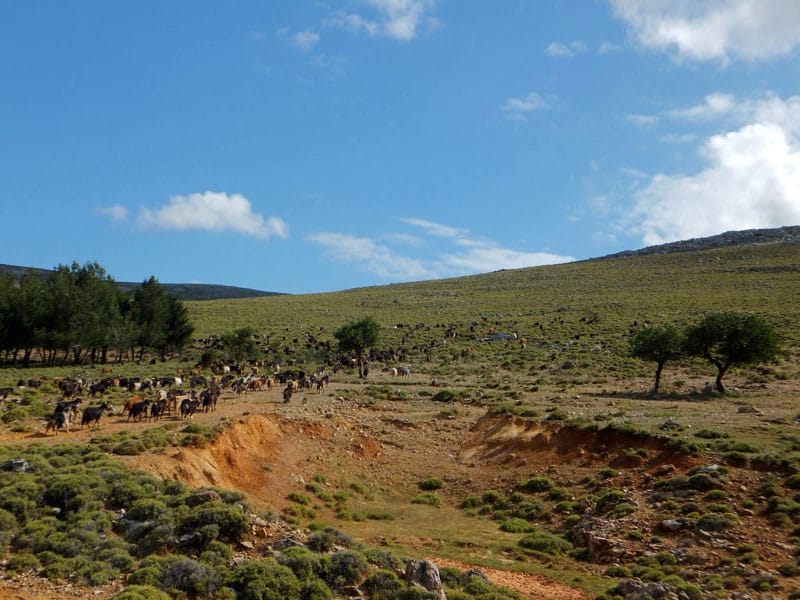
After driving through the southern mastiha-producing regions, we started to head north along the island’s western coast. On a tip from the ferry operator, we stopped in the tiny stone-house village called Avgonima to eat at the restaurant Asteri, which has expansive views of the Aegean. Their specialty is spit-roasted young goat, which they get from local producers. Chios goats munch on wild oregano and thyme so those herby flavors infuse the tender, succulent meat and sweet fat. It was the best goat we’d ever had. For dessert, we were offered candied quince, tangy Greek yogurt, and a small, ice-cold glass of piney mastiha liqueur. We savored those floral, creamy and refreshing island flavors and appreciated all the work that went into making this a memorable meal with a true sense of place.
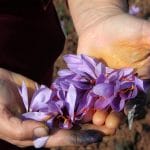 October 6, 2023 Harvest Week
October 6, 2023 Harvest Week
Let us begin with a little Greek mythology. Hermes – son of Zeus, god of thieves and […] Posted in Athens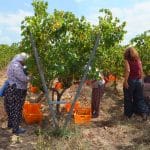 October 5, 2019 Wine Harvest Week
October 5, 2019 Wine Harvest Week
Zeynep Arca Şallıel had a successful career in advertising in Istanbul, but in 1995 she […] Posted in Istanbul November 20, 2015 CB on the Road
November 20, 2015 CB on the Road
When you live in a medieval town that is as beautifully preserved as the little […] Posted in Barcelona
Published on September 23, 2014
Related stories
October 6, 2023
Athens | By Ilias Fountoulis
AthensLet us begin with a little Greek mythology. Hermes – son of Zeus, god of thieves and commerce and messenger of Olympus – and Krokos, a mortal youth, were best friends. One day, while the two friends were practicing their discus throwing, Hermes accidentally hit Crocus on the head and wounded him fatally. On the…
October 5, 2019
IstanbulZeynep Arca Şallıel had a successful career in advertising in Istanbul, but in 1995 she decided to take on a daunting new challenge: taking part in the revival of small-scale viniculture in the ancient winemaking region of Thrace.“I wanted to do something with soil, something that mattered a little bit more,” she says. Her father…
November 20, 2015
BarcelonaWhen you live in a medieval town that is as beautifully preserved as the little Catalonian hamlet of Peratallada, you are never too old for dress-up. All year round, these worn stone walls and charming plaças effortlessly take visitors back in time to the 10th century. However, on the first weekend of October, the sights, sounds,…







































